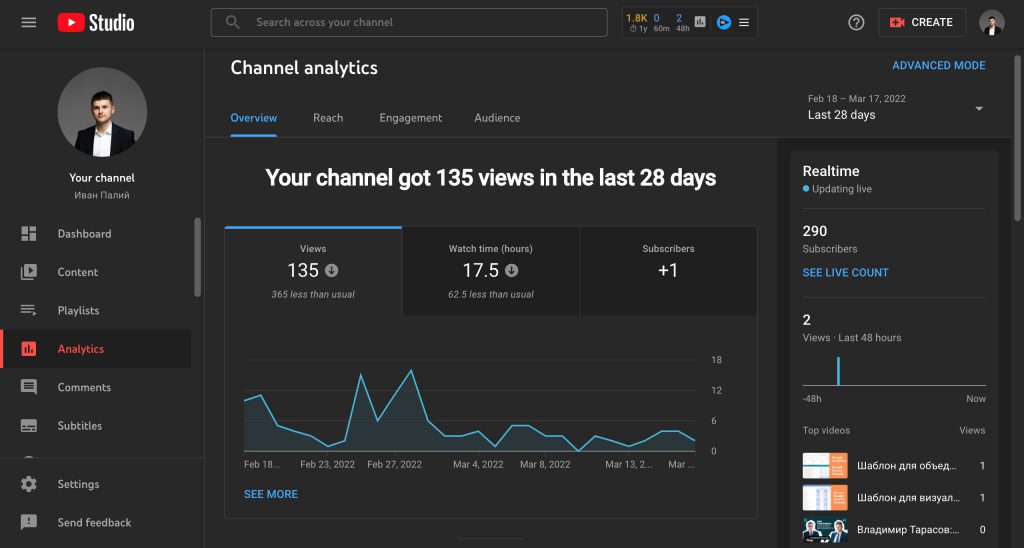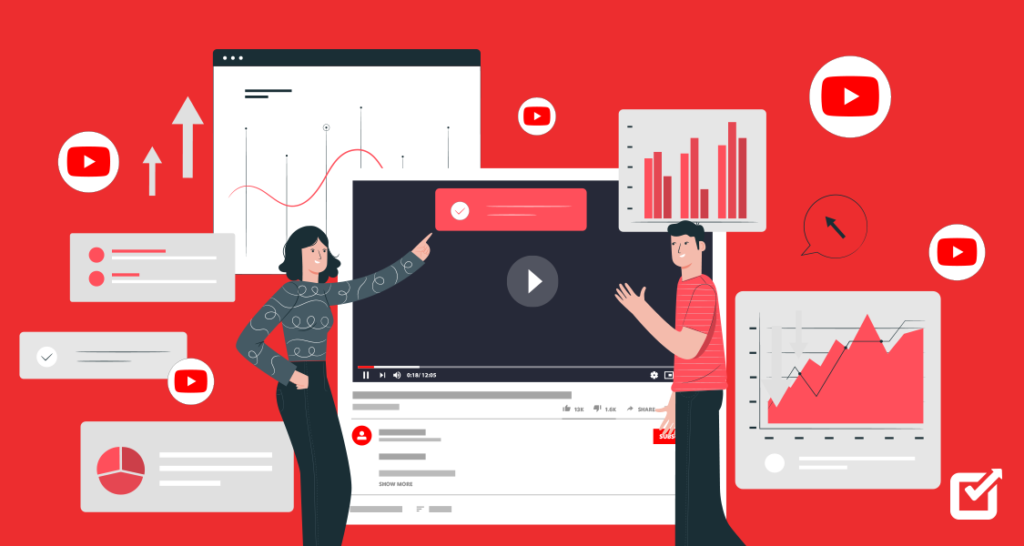YouTube is not just a platform for video streaming; it has revolutionized the sphere of digital marketing. Boasting the position of the world’s second-largest search engine, and coming second only to Google concerning the website visits, YouTube’s influence is undisputed. Every minute sees an upload of 500 hours’ worth of video content to YouTube. Thus, grabbing a fair share of attention in this bustling and dynamic space can be tough.
But, how do you make your brand seen and heard in this sea of videos? The key lies in understanding your target audience and leveraging data to make informed content decisions. That’s where YouTube Analytics fits into the picture.
Understanding YouTube Analytics

YouTube Analytics is an integrated tool built into the platform itself, offering data about the channel and the videos you have uploaded. It provides insights into your audience profiles, their preferences, and their interaction with your videos. Additionally, it reveals the geographical locations from where your audience belongs. This data helps you know your audience’s behaviour to reshape your content such that it aligns with your audience’s tastes and preferences.
Optimizing Performance through Key Metrics
To use YouTube analytics effectively, get a grip on key metrics and see how they intertwine.
Step 1: Define Your Goals
Before delving into analytics, clarify your objectives. Are you aiming to increase brand awareness, drive sales, or engage with your audience? Align your analysis with these goals to ensure actionable insights.
Step 2: Identify Key Metrics
Focus on metrics that matter and ignore vanity metrics. Instead of just views, consider metrics like:
Watch Time: This reflects how much time viewers spend watching your content. Longer watch times indicate high-quality content that retains attention.
Audience Retention: Analyze how long viewers stay engaged in your videos. Identify drop-off points to improve content pacing.
Click-Through Rate (CTR): This shows the percentage of viewers who click on your video after seeing it in search results or recommendations. A higher CTR indicates compelling thumbnails and titles.
Subscriber Growth: Monitor your subscriber count over time to gauge the health of your channel’s audience.
Step 3: Understand Audience Demographics

Dig deeper into the demographics of your audience:
Age and Gender: Tailor your content to match your primary demographic’s preferences and interests.
Geographic Location: Adjust content scheduling based on time zones and localize your messaging if needed.
Step 4: Analyze Traffic Sources
Know where your traffic is coming from:
YouTube Search: Optimize video titles, descriptions, and tags for relevant keywords to improve search visibility.
Suggested Videos: Analyze which videos are leading viewers to your content. Create similar content to capitalize on this trend.
External Sources: Understand the effectiveness of off-platform promotions or collaborations.
Step 5: Dive into Audience Behavior
Examine how viewers interact with your content:
Engagement: Look beyond likes and dislikes. Focus on comments, shares, and video saves. Respond to comments to foster a sense of community.
Watch Patterns: Analyze at what points viewers drop off. Adjust content structure and pacing accordingly.
Step 6: Analyze Video Performance

Compare video performance to refine your content strategy:
Top-Performing Videos: Identify common traits among your best-performing videos. Use these insights to replicate success.
Video Type: Determine which formats resonate most with your audience – tutorials, vlogs, reviews, etc.
Step 7: Monitor Subscriber Behavior
Understanding your subscribers can lead to more tailored content:
Subscriber Viewership: Analyze how much of your content is consumed by subscribers versus non-subscribers.
Notifications: Monitor how often subscribers are notified about new videos. Optimize your publishing schedule to align with peak engagement times.
Step 8: A/B Testing and Experimentation
Continuously refine your strategy through experimentation:
Thumbnail and Title Testing: Experiment with different thumbnails and titles to see which combinations yield higher CTRs.
Content Variations: Test different content styles, lengths, and tones to see what resonates best with your audience.
Step 9: Set Benchmarks and Track Progress

Create benchmarks based on your initial data analysis. Regularly compare your current performance to these benchmarks to gauge growth.
Step 10: Iterate and Adapt
Use data-driven insights to adapt and iterate your strategy over time. The YouTube landscape is ever-evolving, so your approach should be dynamic.
Additional Tips to Get Results Fast on YouTube
- Regular Monitoring: YouTube analytics should not be seen as a one-and-done deal. Regular monitoring allows you to keep a tab on your progress and promptly spot changes or trends.
- Experiment and Refine: Use the insights generated by YouTube analytics to tweak your strategy. If a video isn’t garnering the anticipated watch time or retention ratio, ascertain what’s not working and fine-tune your approach accordingly.
- Engage Actively: Encourage viewers to engage with your videos by liking, sharing, commenting and subscribing. Viewer engagement positively impacts your search ranking and helps enhance your organic discoverability on YouTube.
Ready To Level Up?

YouTube’s potential as a marketing platform is immense and the power of YouTube analytics is an asset that’s often overlooked by businesses. With proper comprehension of key metrics, diligent monitoring, and data-driven adjustments, you can transform your YouTube channel into a dynamo of your marketing venture.
The final takeaway is that while YouTube analytics is a formidable tool, it can only work wonders when combined with creativity and dedication. So, as you create top-notch, engaging content, use the data at your disposal to constantly review and enhance your marketing strategy. The universe of YouTube awaits you!


